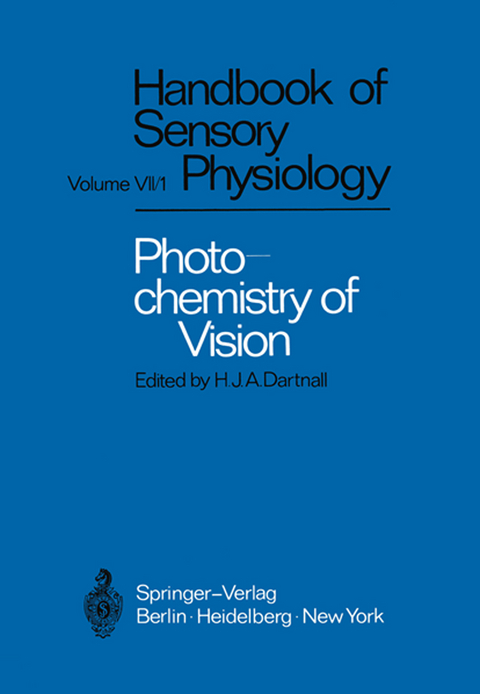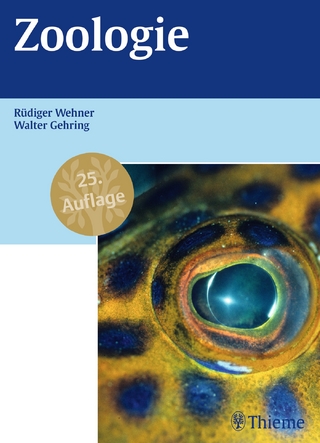
Photochemistry of Vision
Springer Berlin (Verlag)
978-3-642-65068-0 (ISBN)
1 Principles of the Interaction of Light and Matter. By E. W. Abrahamson and S. M. Japar. With 15 Figures.- 2 The Chemistry of the Visual Pigments. By R. A. Morton. With 12 Figures.- 3 The Structure, Spectra, and Reactivity of Visual Pigments. By E. W. Abrahamson and J. R. Wiesenfeld. With 18 Figures.- 4 Photosensitivity. By H. J. A. Dartnall. With 8 Figures.- 5 The Behaviour of Visual Pigments at Low Temperatures. By T. Yoshizawa. With 19 Figures.- 6 The Circular Dichroism and Optical Rotatory Dispersion of Visual Pigments. By T. I. Shaw. With 6 Figures.- 7 Physical Changes Induced by Light in the Rod Outer Segment of Vertebrates. By G. Falk and P. Fatt. With 3 Figures.- 8 The Visual Cells and Visual Pigments of the Vertebrate Eye. By F. Crescitelli. With 30 Figures.- 9 Visual Pigments in Man. By W. A. H. Rushton. With 12 Figures.- 10 The Regeneration and Renewal of Visual Pigment in Vertebrates. By Ch. Baumann. With 5 Figures.- 11 The Rhodopsin-Porphyropsin Visual System. By C. D. B. Bridges. With 37 Figures.- 12 Microspectrophotometry of Photoreceptors. By P. A. Liebman. With 14 Figures.- 13 Inert Absorbing and Reflecting Pigments. By W. R. A. Muntz. With 16 Figures.- 14 The Adaptation of Visual Pigments to the Photic Environment. By J. N. Lythgoe. With 18 Figures.- 15 List of Vertebrate Visual Pigments. By J. N. Lythgoe.- 16 Structure of Invertebrate Photoreceptors. By R. M. Eakin. With 59 Figures.- 17 The Natural History of Invertebrate Visual Pigments. By T. H. Goldsmith. With 9 Figures.- 18 Cephalopod Retinochrome. By T. Hara and R. Hara. With 15 Figures.
| Erscheint lt. Verlag | 15.11.2011 |
|---|---|
| Reihe/Serie | Autrum,H.(Eds):Hdbk Sens.Physiology Vol 7 | Handbook of Sensory Physiology |
| Zusatzinfo | XII, 848 p. |
| Verlagsort | Berlin |
| Sprache | englisch |
| Maße | 170 x 244 mm |
| Gewicht | 1451 g |
| Themenwelt | Medizin / Pharmazie ► Allgemeines / Lexika |
| Naturwissenschaften ► Biologie ► Zoologie | |
| Schlagworte | Assessment • Chemistry • Evolution • Lichtsinn • Photochemie |
| ISBN-10 | 3-642-65068-6 / 3642650686 |
| ISBN-13 | 978-3-642-65068-0 / 9783642650680 |
| Zustand | Neuware |
| Haben Sie eine Frage zum Produkt? |
aus dem Bereich


